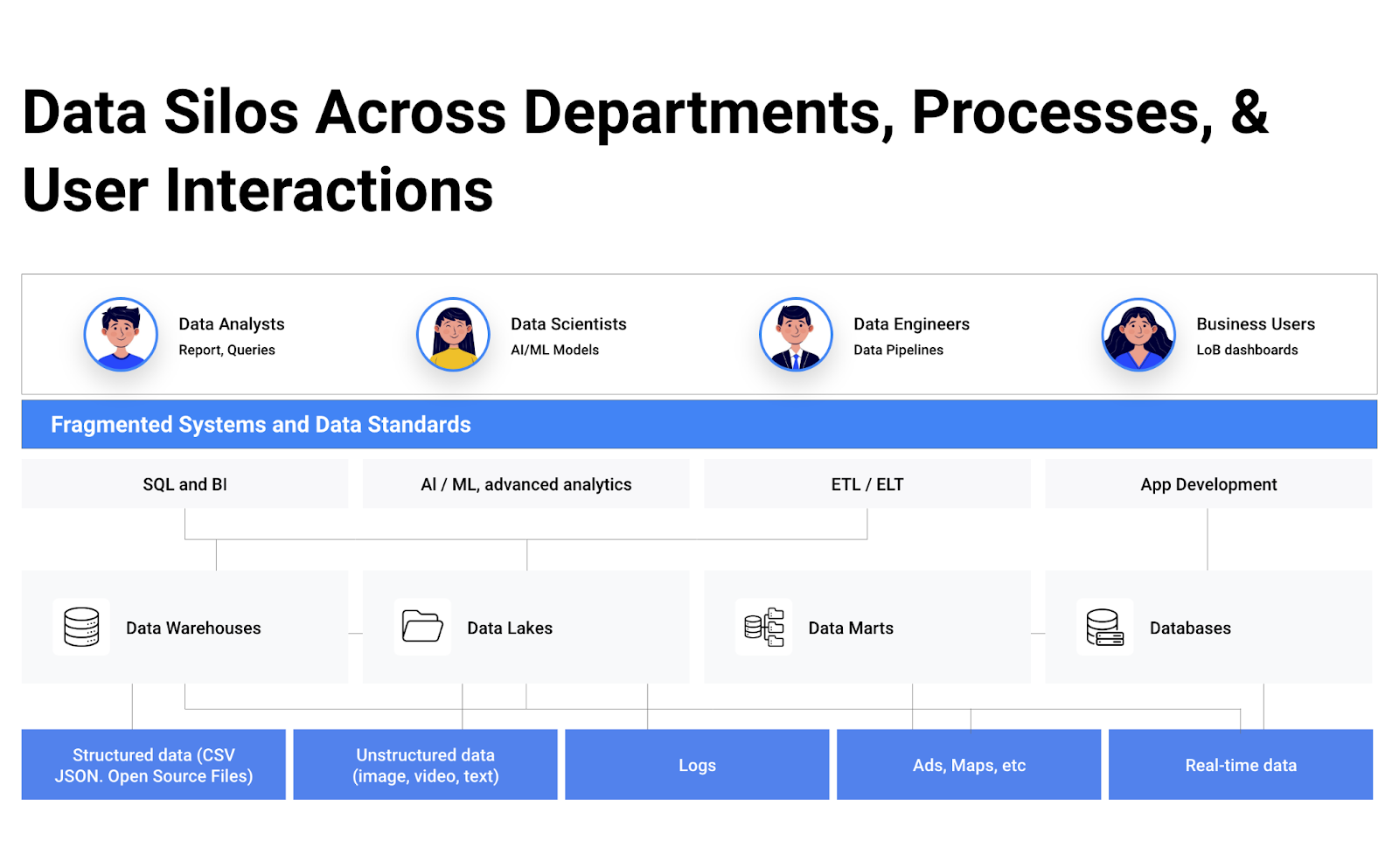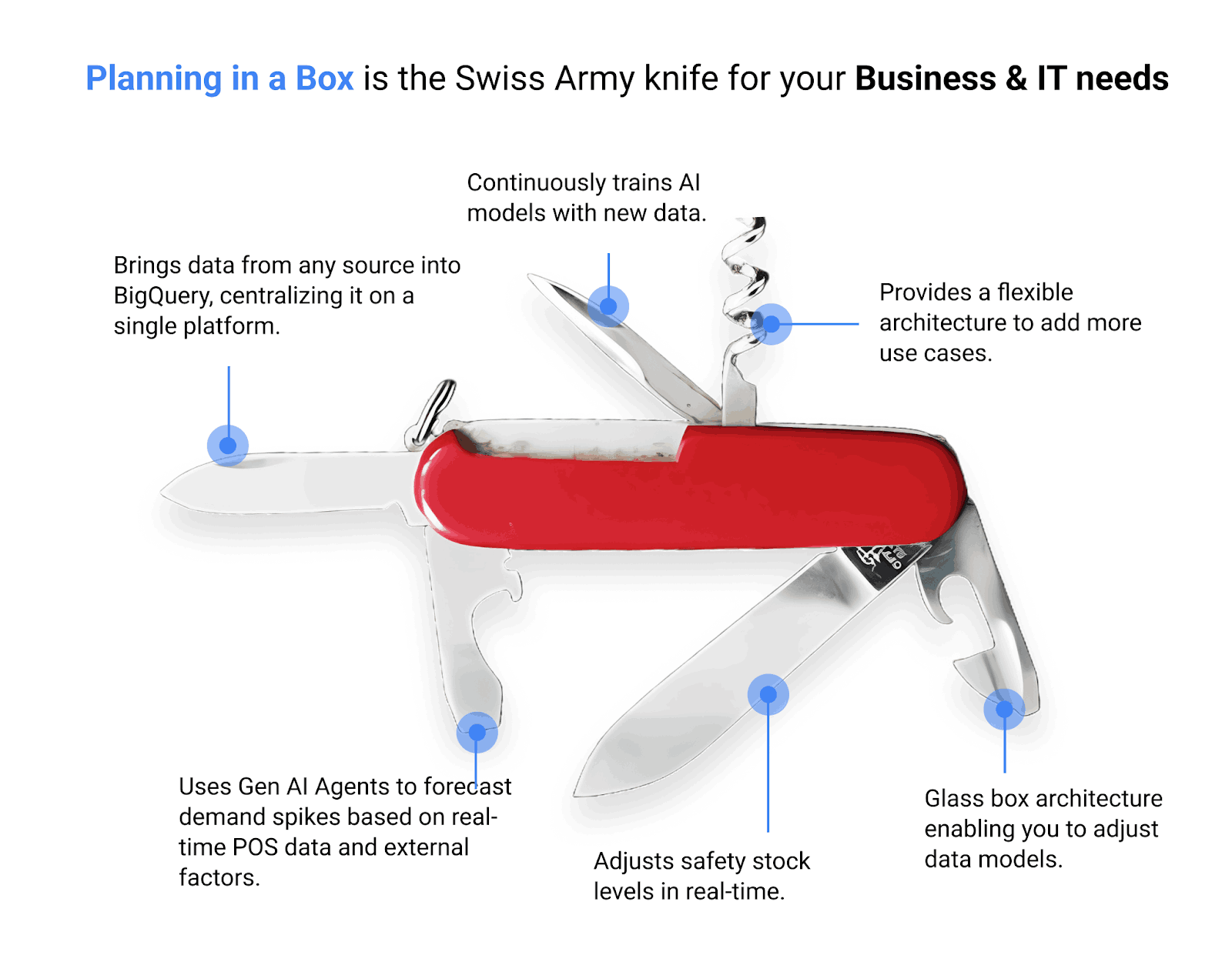
Transform Your Supply Chain Planning and Marketing Strategies with Google Cloud and SAP Integration

Transform Your Supply Chain Planning and Marketing Strategies with Google Cloud and SAP Integration
July 15, 2024 | Asheesh Gupta
Blog / How to Leverage SAP Data for Advanced Analytics on Google Cloud
As someone deeply involved in the supply chain, you know that data can be both a powerful asset and a challenging obstacle. Data comes in from various sources, stored and processed in different services like data warehouses, data lakes, or databases. These varying formats and locations make it difficult to integrate and use data effectively, leading to inefficiencies across your business units and workflows.

Image Source: Google Cloud
Dark Data
Not knowing what data exists within your organization or where to find it can be a major obstacle. “66% of organizations reported that at least half of their data is dark,” meaning it’s hidden or unutilized, making it difficult to access valuable insights.
Bad or Missing Data
The integrity of the data used for business decisions is crucial. Unfortunately, “fewer than half of data leaders (44%) are fully confident in their organization’s data quality,” leading to unreliable insights and potentially flawed decisions.
Inconsistently Governed Data
Ensuring consistent access, security, and quality across your organization is challenging. Without consistent governance, data can lead to confusion, unauthorized use, and unreliable insights for decision-making.
Sources: Five Factors For Planning A Data Governance Strategy, Forbes, 2023 & Gartner Glossary, Dark Data, 2024. Google Cloud Customer Intelligence Trends Research Survey, 2024.
To overcome these challenges and create a solid foundation for AI, leveraging the right tools is essential. Google Cloud Platform (GCP) offers a comprehensive suite of services that can help you organize, modernize, and transform your data for AI readiness.
GCP provides a comprehensive end-to-end data platform with services like BigQuery for large-scale data analysis, Dataplex for data governance, Dataproc for big data processing, and Dataflow for stream and batch data processing. Looker enables insightful data visualization, while Vertex AI offers fully managed machine learning tools within a single, unified workflow. Google’s Generative AI App Builder (Gen App Builder) allows developers to leverage Google’s foundation models, search expertise, and conversational AI to create chatbots and search engines, even with limited ML skills.
Additionally, Google Cloud offers access to Google Trends data and a vast library of public and commercial datasets, easily consumed in BigQuery. Through Vertex AI’s Model Garden, users can choose from various models, including first-party multimodal models from Google, open-source models, and third-party models, ensuring the best fit for their needs.

But here’s the caveat: getting your data to Google Cloud can turn out to be a major hurdle. Typically, data generated from SAP ERP & CRM systems often loses context when exported outside the SAP landscape. Rebuilding this context in a target data lake using various tools like Join, Aggregation, and Calculation is complex and costly. Pluto7’s Planning in a Box platform addresses this challenge by centralizing data from various SAP and non-SAP sources like Netsuite, Oracle EBS, and Salesforce, creating a unified canonical view.
Here’s how Pluto7’s decision intelligence platform Planning in a Box can help:
The Cortex Framework provides a reference architecture that can quickly replicate SAP tables, while maintaining their context. This integration eliminates the need for complex and costly rebuilding of data context, allowing you to start analyzing your data in Google Cloud without delays. For example, if you need to replicate sales data from SAP to Google Cloud, the Cortex Framework ensures that all relationships and hierarchies within the data are preserved, making the transition smooth and efficient.
Pluto7’s Real-Time Ingestion Framework transforms raw SAP data into a structured format suitable for analysis. This framework allows you to continuously integrate data from various sources directly into Google Cloud. For instance, if you have real-time sales data from your e-commerce platform and inventory data from your SAP system, the framework automatically integrates these data streams in real-time. This ensures that your Google Cloud environment always has the most up-to-date information without the need for manual data reconciliation.
The master ledger provides a centralized data repository that offers a unified view of critical data points such as inventory, sales, and insights from both structured and unstructured data. By centralizing your data, the master ledger eliminates the silos that often exist between different systems.
For example, rather than having to query multiple SAP modules and external systems to get a complete picture of your inventory levels, the master ledger aggregates this data into a single view. This streamlined access to comprehensive data means you can quickly monitor and adjust inventory levels, avoiding stockouts or overstocking, and ultimately improving your operational efficiency.
Pi Agent is an AI-powered assistant that enhances decision-making within the Planning in a Box platform. It can dig into all types of data and provide the insights you need without requiring complex queries. This is particularly beneficial for planners who often need to query hundreds of tables daily, which can be incredibly time-consuming. Pi Agent analyzes historical data, forecasts future demand, and delivers actionable insights, helping you optimize your supply chain processes and improve overall performance. For instance, instead of manually analyzing sales trends to predict future inventory needs, Pi Agent provides you with accurate forecasts, allowing you to focus on strategic planning rather than data retrieval.
Advanced data analytics strategies can vary based on your specific needs. You can either export your data to Google Cloud or integrate Google Cloud’s capabilities directly into your SAP environment through data federation. Whatever approach you choose, we can help you. At Pluto7, we bring vast experience in the supply chain domain, SAP data environment, and AI technologies on Google Cloud. This expertise allows us to help you achieve your goals faster and with less effort.
Transitioning from traditional, complex SAP data replication methods to a streamlined approach can be challenging. Many businesses face difficulties maintaining data context and managing the costs and complexity of replication. Planning in a Box helps bridge this gap by seamlessly integrating your SAP data with Google Cloud.
With Planning in a Box, you can quickly gain actionable insights into your supply chain. This enables you to optimize inventory management, reduce stockouts and overstocking, and cut inventory costs. Improved demand forecasting accuracy means you can enhance your gross margins and profitability.
Business users benefit from better profitability, while IT users get a flexible platform to add data sets, run experiments, tweak models, and create a central hub for AI. It’s a solution that works for everyone.
Join us for a workshop where we demonstrate how our solutions enable you to extract immediate value from your SAP and Google Cloud integration. Discover how we can help you turn your data into actionable insights fast, driving your business forward with precision and speed.
ABOUT THE AUTHOR